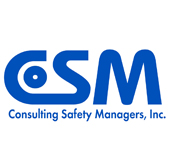Managing Safety
Getting Better at Managing Safety
Clients working with us to get better at managing safety follow a six-step improvement journey
Step 1: Assess
Let’s assess your starting point. We identify and evaluate your existing safety practices, injury rates, safe behaviors, and severe injury potential. We also interview department managers and supervisors to understand their experience interfacing with the safety program or management system. We can even conduct a perception survey to understand the baseline safety culture.
Step 2: Plan
We’ll take the insights from the assessment and prepare an improvement plan and model. The plan we use is called Safety Management Plan, which declares goals, objectives, and action plans. We’ll show you how to apply the Rule of Threes to improve execution, a popular and effective method among our clients. We also help you design a model, which is customized a framework for a management system that all organizational levels can visualize.
Step 3: Organize
We organize your four organizational levels for their roles. A management system is comprised of safety processes. We assign those safety processes to owners: leaders, managers, supervisors, and employees. We’ll set up a steering group called a Safety Excellence Team, as well as other contributing teams for sets of safety processes.
Step 3: Learn
Let’s teach your people the safety processes. We’ll educate the teams and key people about proactive safety culture, healthy management systems, and behavior-based safety. They need to understand the safety processes they’ll be leading or applying.
Step 4: Implement
Now you’re ready to launch! We methodically begin developing and rolling out safety processes, including management and hazard control practices. We’ll implement at a comfortable pace and bring the safety processes online and functioning.
Step 5: Verify
We’ll set up and begin verification processes to assure the safety processes are functioning well.
Step 6: Improve
We’ll identify problems early, assign corrective actions, and continuously improve the safety processes.
